1.0 Introduction
The Africa Corps is a Russian state-backed expeditionary formation created in 2023 to replace the more independent Wagner Group following the latter’s failed rebellion against Moscow in June 2023 and the death of its leader, Yevgeny Prigozhin, two months later in a plane crash under suspicious circumstances. Unlike its predecessor, the Corps is directly subordinated to Moscow and functions as a more overt instrument of Russian state policy. Subordinate to the GRU and having an influence wing managed by an FSB officer, the Africa Corps is much more tightly lashed to Russian intelligence than Wagner. Moscow is using the Africa Corps to a greater extent, and much more openly, to displace Western (especially French and US) influence from Africa. This is most evident in a shift in focus towards the Sahel, and away from more directly profitable Wagner operations elsewhere.

2.0 Motto, Symbols, Patches and History
2.1 Motto
“He Who Dares Wins”
2.2 Symbols
Africa Corps members and associated propagandists display Soviet and Russian flags, imagery that links the corps to Moscow’s broader historical and geopolitical narrative. Neo-sovereigntism, pan-Africanism, and anti-Westernism are core narratives prevalent in Africa Corps publications and associated “news agencies.” African Initiative, a Russian propaganda outlet, introduced the Africa Corps in November 2023, stating that the Corps would help Moscow capitalise on the “African Spring.” Specifically, that “The Russian Defence Ministry will help sovereign African states counter the West’s neo-colonial influence, undermining its resource base, and strengthen Russia’s equal cooperation with African countries.” The security situation in the Sahel is presented as a result of Western mismanagement and French clandestine operations. [source]
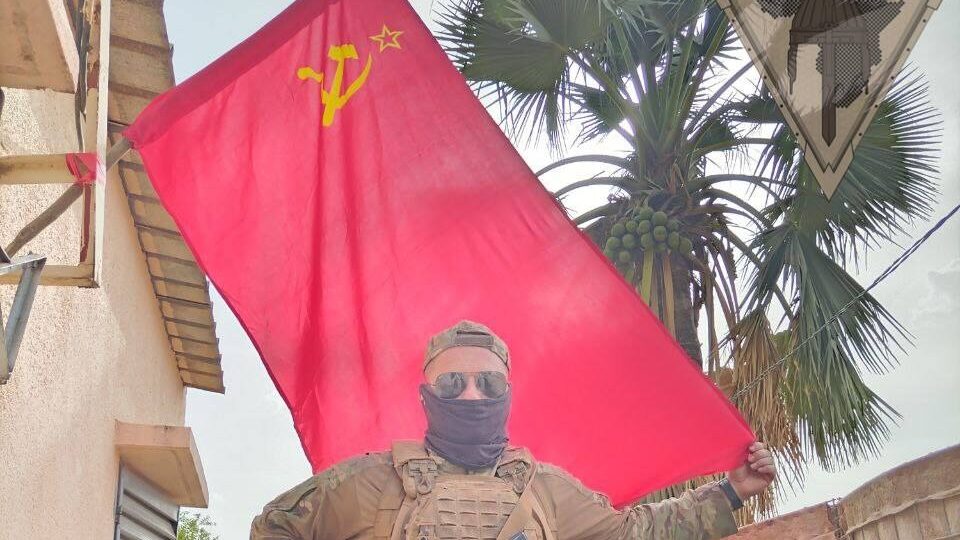
Africa Corps member posing with a Soviet flag [image source]

Viktor Lukovenko (aka Viktor Vasilyev), Africa Corps associate, in front of a Thomas Sankara mural in Burkina Faso [image source]
2.3 Patches
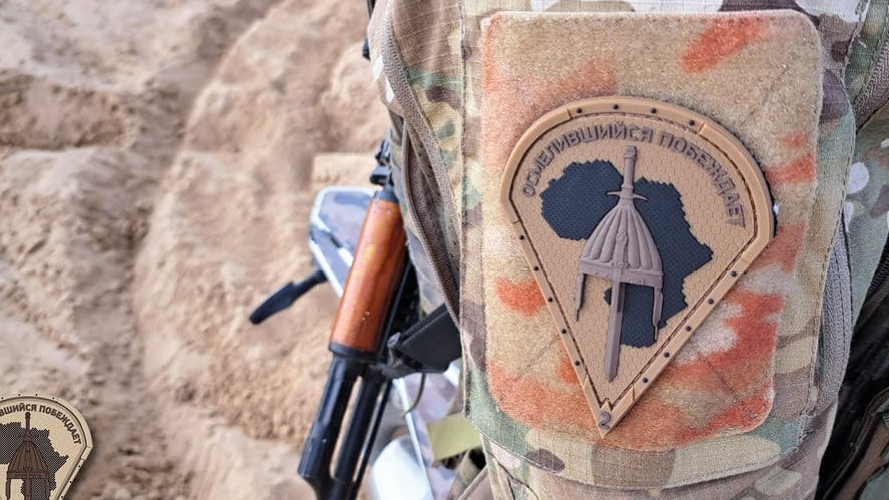
The Africa Corps patch features a sword and a helmet over a stylised continent of Africa, with the motto in Russian written above. [image source]
2.4 History
In August and September 2023, Deputy Defence Minister General Yunus-bek Yevkurov and General Andrei Averyanov visited numerous African countries (including Mali, Niger, and Burkina Faso) to discuss military cooperation with Russia. The name “Africa Corps” appeared in the November 2023 African Initiative publication mentioned above, which outlined Yevkurov’s “direct management” of the Corps. The arrival of around 100 Russian fighters in Ouagadougou in January 2024 marked the first independent deployment of the Africa Corps. However, the Corps was reportedly instrumental in the retaking of Kidal in Mali in November 2023. The African Initiative Telegram stated that the Corps’ mission in Burkina Faso was to protect President Traoré and patrol the Bamako-Ougadougou highway, where “militants and bandits backed by France operate.” [source, source, source]
While the Africa Corps was established to replace Wagner’s operations in Africa, remnants of the Wagner network continue to operate on the continent, notably in the Central African Republic. The Africa Corps represents the state-integrated successor, absorbing Wagner’s personnel, contract, and infrastructure, while phasing out its independent structures. [source, source]
3.0 Organisation
3.1 Subordination to the Ministry of Defence and GRU
Unlike the Wagner Group, the Africa Corps is de facto subordinate to the Russian Ministry of Defence and Military Intelligence (GRU). Deputy Defence Minister Yunus-Bek Yevkurov and General Andrei Averyanov of the GRU are listed as key overseers of Africa Corps’ activity by African Initiative. Besides these two key figures, the command structure is largely unknown. [source, source]
3.2 Business Structure
The Africa Corps’ business model differs from that of Wagner Group leader Yevgeny Prigozhin, who had a more ad hoc, self-financing approach. Instead of creating its own companies to extract resources directly, as Wagner did in Sudan and CAR, the Africa Corps relies on formal agreements with host governments and Russian state-linked enterprises. In Burkina Faso and Mali, this involves support for gold refineries as well as agreements regarding nuclear reactors and solar farms.
Moscow also recently signed a memorandum of understanding with Niger, aimed at expanding resource extraction, particularly in uranium. The funds obtained this way are likely primarily used to finance the Africa Corps. However, Moscow has paid for Iranian Shahed drones using gold worth hundreds of millions in USD. This suggests that, at least partly, Africa Corps’ securing of natural resource access can be used to fund Russia’s war efforts in Ukraine. Moscow is also reportedly putting pressure on Bangui to replace agreements with Wagner with more direct contracts with the Africa Corps, in which CAR will pay in cash, rather than gold or timber access. [source, source, source, source, source]
3.3 Key Figures

General Andrei Averyanov – [image source]
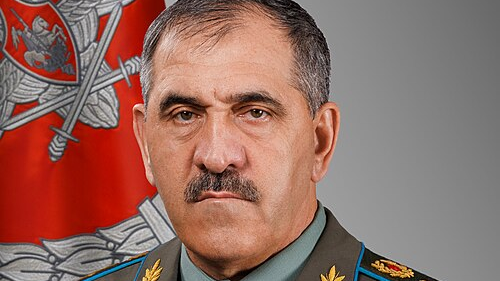
Deputy Minister of Defence General Yunus-bek Yevkurov – [image source]

Yevkurov and Averyanov meeting Burkinabé military leadership in July this year [image source]
Ivan Aleksandrovitch Maslov – Former Wagner commander and presumed current head of Africa Corps operations in Mali. [source]
3.5 Recruitment
Recruitment is conducted primarily through Telegram channels. Applicants are directed to one of seven recruitment points for assessment before signing a contract with the Russian Ministry of Defence. Contracts are for a minimum of one year (3 years for officers) and have a base salary of 230,000 Rubles ($2770 USD) per month when abroad. Recruits are paid in foreign currencies. Unlike Wagner, active-duty Russian soldiers can be seconded into the Africa Corps.
In this way, they retain their rank and military benefits. However, transfer from the Special Military Operation (SVO) in Ukraine is explicitly prohibited. Reports suggest that roughly 70% of Africa Corps members are former Wagner personnel. Additional manpower is sourced from local recruits, referred to as “Black Russians.” Viktor Lukovenko, who ran the pro-Africa Corps Telegram channel “Smile and Wave,” was arrested in Kyrgyzstan in April on suspicion of mercenary recruitment. Notably, drone pilots and electronic warfare specialists are encouraged to join. This could be a response to a recent increase in drone strikes by Tuareg separatists in Mali. [source, source, source, source]
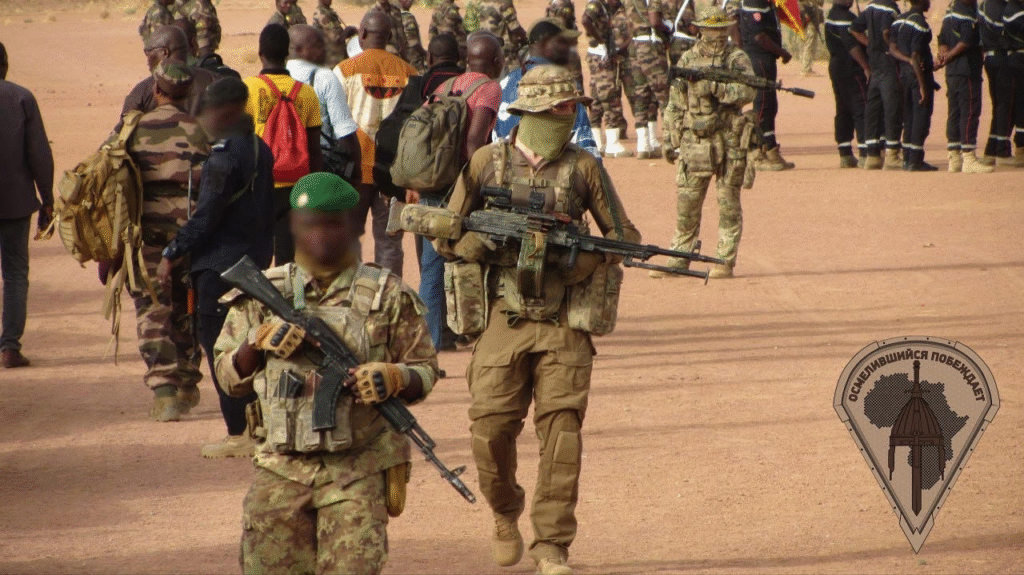
3.5 African Initiative
As Moscow subsumed Wagner, it also took over and expanded Prigozhin’s network of strategic communications. Alongside the Russian Orthodox Church, the African Initiative forms a core part of Moscow’s information operations targeting Africa, frequently publishing updates on Africa Corps activities and promoting Russian-African cooperation. Several associated Telegram channels, like Lukovenko’s “Smile and Wave,” amplify African Initiative messages. Federal Security Service (FSB) officer and Valdai Club associate Artem Kureyev is editor-in-chief of the African Initiative. The organisation has local offices in Bamako and Ouagadougou and organises cultural events while pushing Russian propaganda. One African Initiative publication suggested that Russia had found evidence of illegal US biolabs experimenting on locals throughout Africa. [source, source]
Anna Zamaraeva, a former Wagner spokesperson, is the deputy editor of the African Initiative. Similarly, Lukovenko, a close associate of Prigozhin, established the Burkina Faso office of the African Initiative. In this way, the information operations of the Africa Corps make use of the infrastructure established under Prigozhin, but now much more explicitly serve Moscow’s geopolitical interests. Local networks like AES Info and Niger’s ORTN-Télé Sahel further publish Russian narratives. Similarly, African influencers like Nathalie Yamb and Egountchi Behanzin amplify anti-French and pro-Africa Corps sentiment. [source, source, source, source, source, source, source]
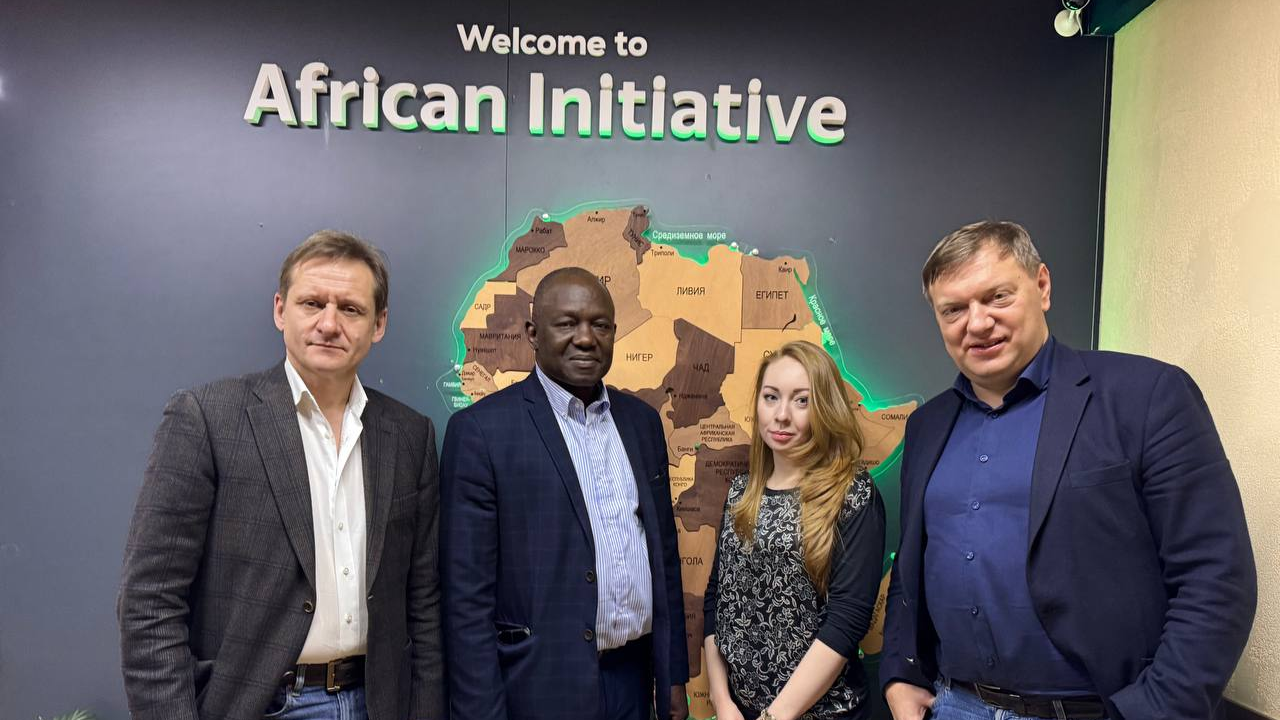
Artem Kureyev (far right) interviews a Malian politician about the French/Ukrainian influence on the security situation in Mali – [image source]
4.0 Equipment
4.1 Weapons
Imagery from the Africa Corps Telegram channels provides insights into its weaponry, which closely mirrors standard Russian military equipment. Notable weaponry includes what appears to be:
- AK-103 assault rifles fitted with silencers
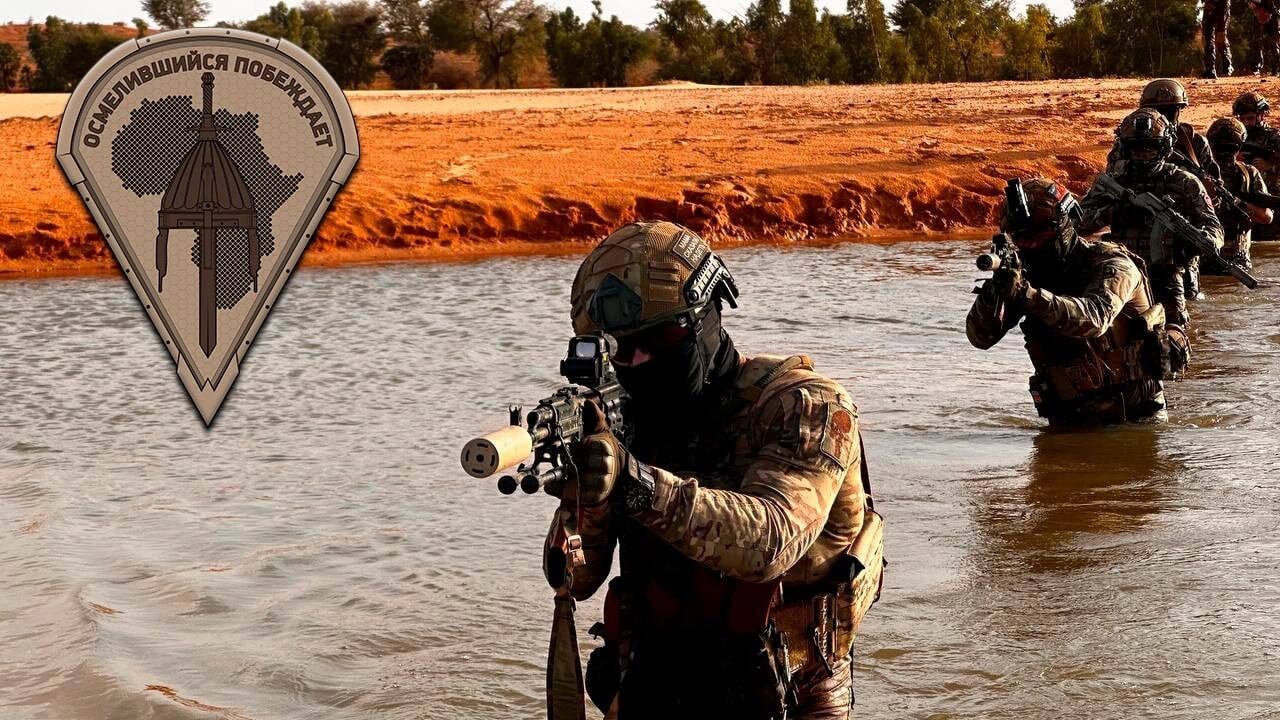
- Specter Tactical sniper rifle by BespokeGun, also fitted with a silencer.
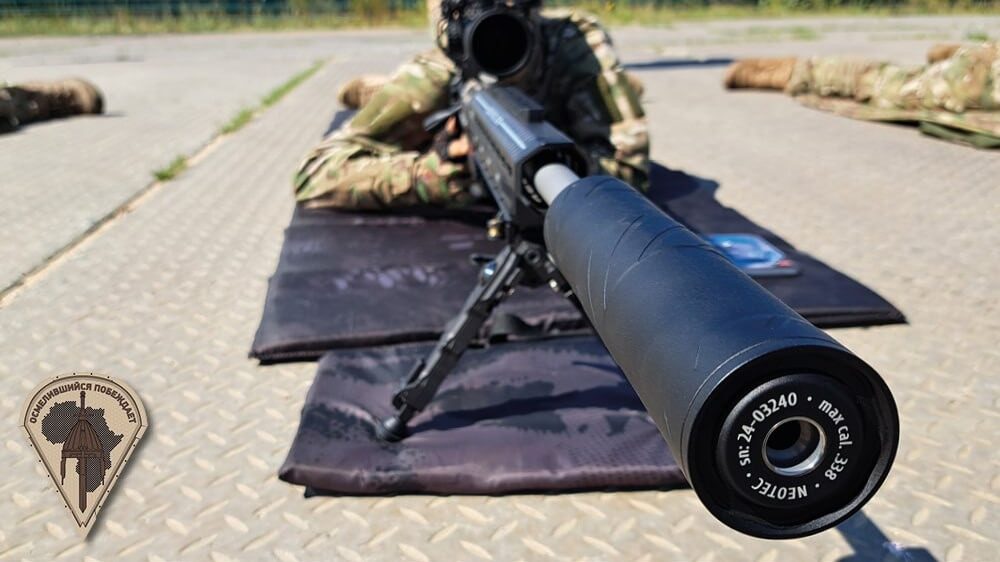
- 2B14 “Pordnos” mortar

- Surveillance/Kamikaze drones

- AGS-17 automatic 30mm launcher.

Notably, ORTN-Télé Sahel reported that Africa Corps military instructors delivered anti-aircraft weaponry to Niamey in April 2024. Such capabilities are unnecessary for Niger’s counterinsurgency operations. However, their presence placed at least some pressure on the US to abandon its drone base in Agadez, which they did in August 2024. It also signaled an ability to take over infrastructure, just as Wagner occupied bases in Mali that were abandoned by France. This corresponds with Africa Corps’ core objective: the displacement of Western influence in Africa. Turkish Bayraktar TB2 drones, operated by Sahelian governments, have reportedly been instrumental in Africa Corps operations, notably in Mali. [source, source]
4.2 Vehicles
The Africa Corps Telegram channel frequently highlights the use of motorcycles. Heavier assets, including tanks and infantry fighting vehicles, are also displayed. Air assets, including Mi-24 attack helicopters and Su-24 jets are also shown. One Su-24 crashed into the Niger River in June this year. However, videos circulating on social media suggest that at least two Su-24 aircraft are currently in operation in Mali. [source, source, source]
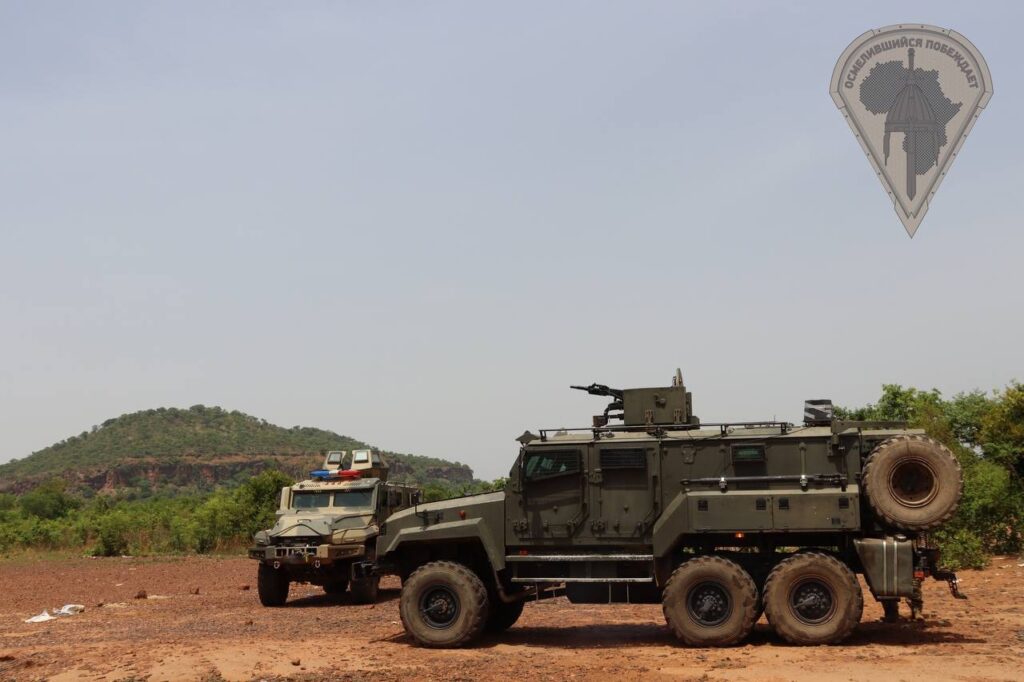
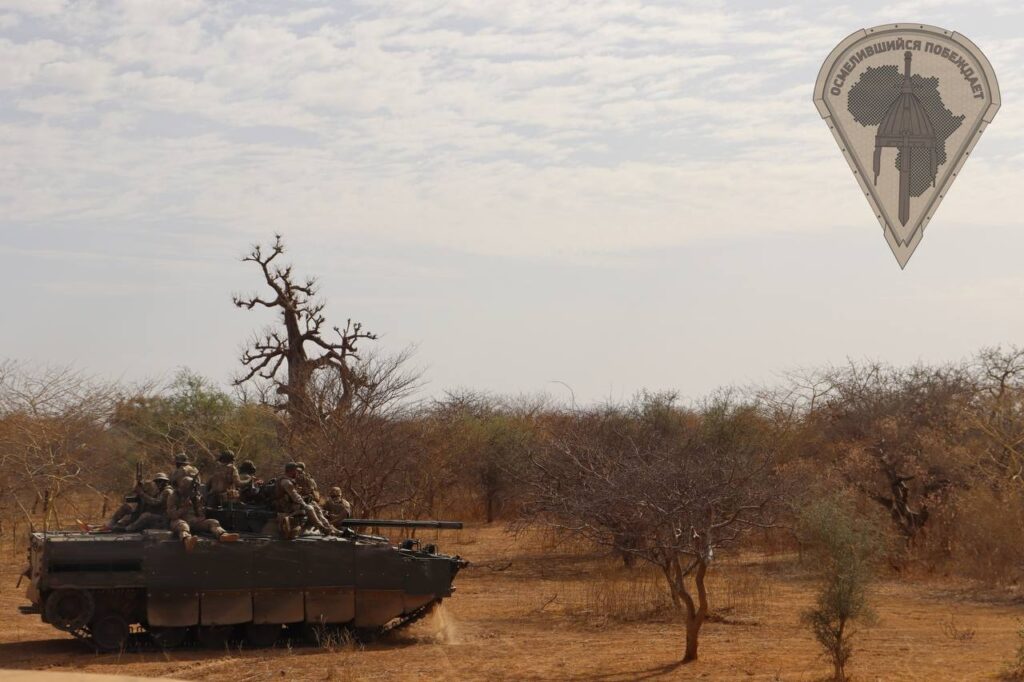
5.0 Tactical-Operational Information
Africa Corps’ activities are concentrated in the Sahel, most notably Mali, Burkina Faso and Niger which make up the anti-Western Alliance of Sahel States (AES) bloc. Here Moscow seeks to consolidate influence, displace Western actors, and secure access to resources and basing. The corps is also active in Haftar-controlled Libya and will likely take over Wagner operations in CAR.
The Africa Corps is primarily employed in counterinsurgency and stability support for Russia-allied African states. Its principal opponents are jihadist groups such as Jama’at Nusrat al-Islam wal Muslimeen (JNIM) and Islamic State Sahel Province (ISSP) as well as Tuareg separatist groups in Northern Mali. Tasks include desert patrols, supporting local militaries in offensives, providing training, and the use of armoured vehicles and aircraft in larger operations.
5.1 Notable Operations
Seizure of Kidal (November 2023) – Kidal had been a separatist stronghold for Tuaregs in Mali for nearly a decade. The seizure of Kidal by the Malian military with notable Africa Corps support was a significant victory. African Initiative refers to this operation as the clearest example of the successes that Africa Corps can provide. [source, source]
Mauritania cross-border attack (April 2024) – The Malian army, with Africa Corps support, raided the border village of Fassala in Mauritania in search of Tuareg separatists and opened fire on civilians. The Mauritanian government responded with warnings and a series of drills near the border. African Initiative presents Mauritania as pro-Western and supportive of terrorism in Mali. [source, source]
Ambushes – Africa Corps members are key targets of insurgents in Mali. On multiple occasions, JNIM and Tuareg separatists have targeted Africa Corps convoys, with the aftermath showing Russian bodies displayed on social media. A Tuareg ambush on a Malian/Russian convoy in Anoumalane in June this year, which killed 23 Russians, is viewed as Africa Corps’ first significant loss. More recently, on August 1st, JNIM published a video of the results of an attack on an Africa Corps convoy in Mopti, Mali. The group also published a warning specifically to the Africa Corps. [source, source, source]
5.2 Core Purpose
- Provide military support to friendly states.
- Secure access to natural resources.
- Establish long-term military, infrastructure and energy partnerships.
- Undermine Western influence.

5.3 Tactics
The Africa Corps trains Sahelian military personnel and works alongside them in major operations such as the seizure of Kidal. Footage posted to their Telegram channel also shows Africa Corps pilots striking supposed insurgent positions from the air. The corps is accused of continuing Wagner’s human rights violations, including extrajudicial killings, torture and massacres. [source, source, source]
5.4 Personnel Size
The UK MOD estimated that the Africa Corps consisted of a minimum of 2,000 personnel. The Polish Institute of International Affairs estimates the number is around 6,000 across the continent.
6.0 The Future
6.1 Expansion
Chad is one likely area of expansion for the Africa Corps, given France’s completion of its withdrawal in January this year, political instability, and a number of armed actors against whom the corps could be deployed. An established presence in Chad would also allow Moscow a degree of control over arms flow into Sudan. However, Sudan has seemingly been deprioritised with the shift from Wagner to Africa Corps. A Grey Dynamics assessment in August 2025 argues that Benin and Togo are likely targets for the Africa Corps, and we do not rule out a transition from Wagner to Africa Corps in Central African Republic. [source, source]
Despite a stated objective of bringing Algeria closer to the Alliance of Sahel States (AES) and significant military agreements between Algiers and Moscow, the Africa Corps is unlikely to expand into Algeria in the near future. Algiers has clashed with Bamako over the issue of Tuareg independence and the renewal of the conflict, with Africa Corps support, has produced a flow of refugees into Southern Algeria. Tensions have further risen over the Algerian downing of a Malian drone in April. Similarly, cross-border tensions between Mali and Mauritania have been exacerbated by the Africa Corps activities outlined above. As such, we consider Africa Corps’ expansion into Mauritania as unlikely. [source, source, source]
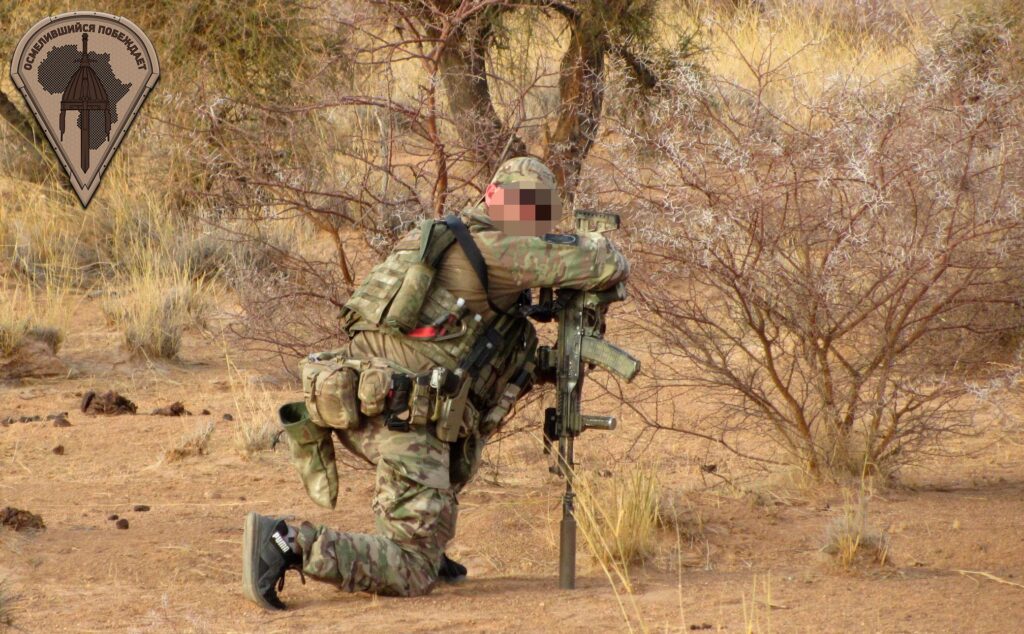
6.2 Threats
The greatest threat to the success of the Africa Corps and Russia in Africa generally is the potential collapse of friendly governments, specifically the AES members. Far from bringing stability, since the arrival of the Africa Corps, extremist violence across the AES has exponentially increased. The capabilities and area of operations of insurgent groups have significantly expanded in the last two years. Historically, Mali and Burkina Faso have been particularly coup-prone when they proved militarily ineffective. Africa Corps operations, including the targeting of civilians, have both fueled jihadist recruitment and caused rifts within the Malian junta. [source, source]
Another major threat to Africa Corps’ mission is the situation in Russia itself. The broad plans outlined for the corps by African Initiative were clearly made based on a positive outlook on the direction of the war in Ukraine. Such an outlook now seems increasingly unlikely, and Moscow may decide their military resources are better focused on Ukraine. The specific prohibition of soldiers leaving the SVO to join the Africa Corps is one indication of this. [source, source]
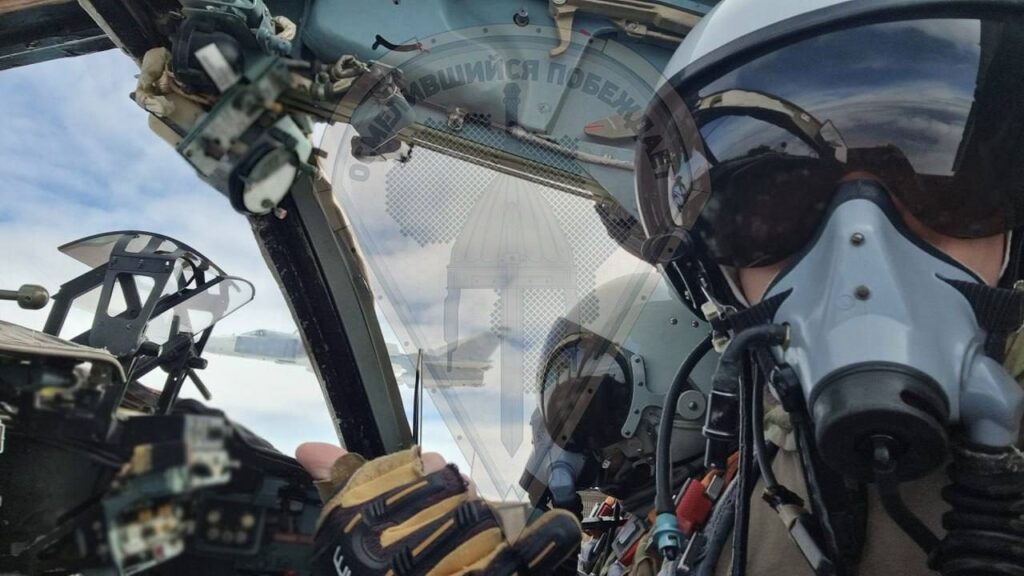
7.0 Conclusion
Subordinate to GRU and with an influence wing managed by an FSB officer, the Africa Corps is much more tightly lashed to Russian intelligence than we saw with Wagner. Its activities are concentrated in the AES, where it supports allied states in exchange for formal economic agreements and political alignment with Moscow. Understanding the Africa Corps is essential to make sense of the shift in Russia’s approach to influence in Africa as well as the security landscape of the Sahel. The future of the Africa Corps will shape the security situation in the Sahel as well as Russia’s geopolitical standing/presence. Having failed to save its ally in Syria, it is unlikely Russia will be seen as an attractive ally should it fail in its mission in the Sahel.